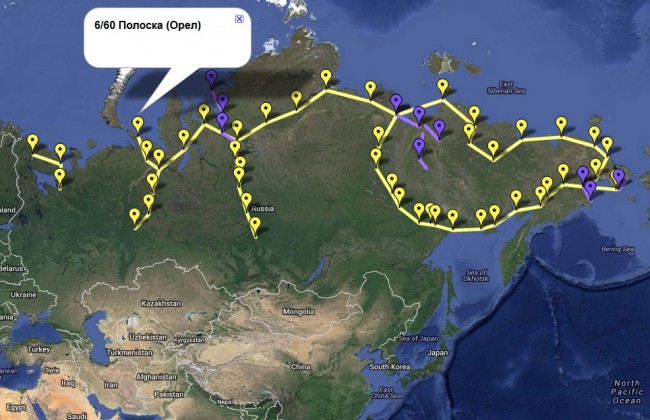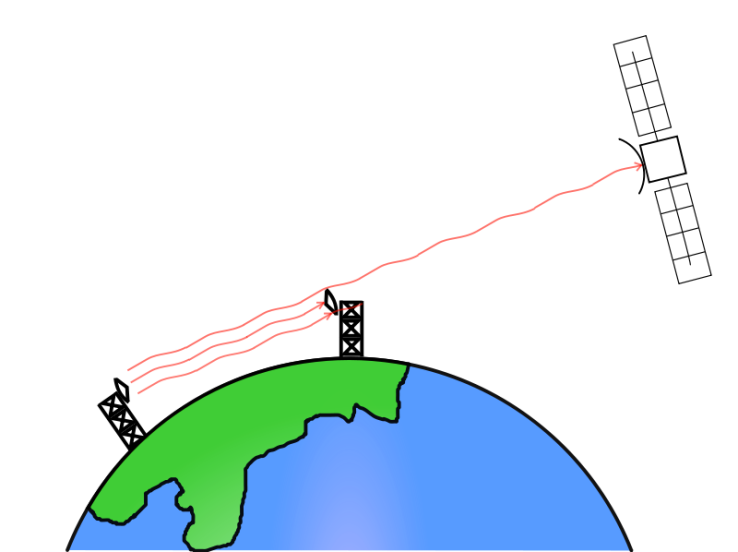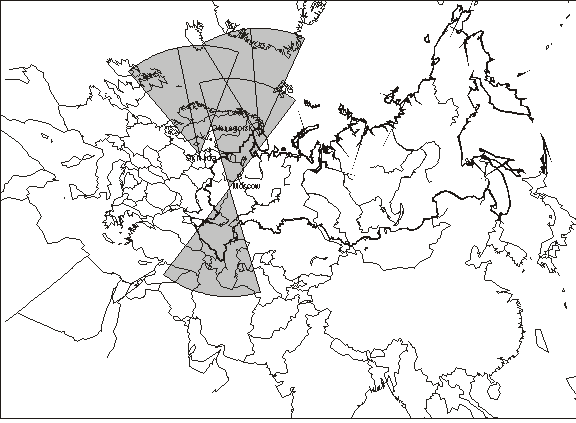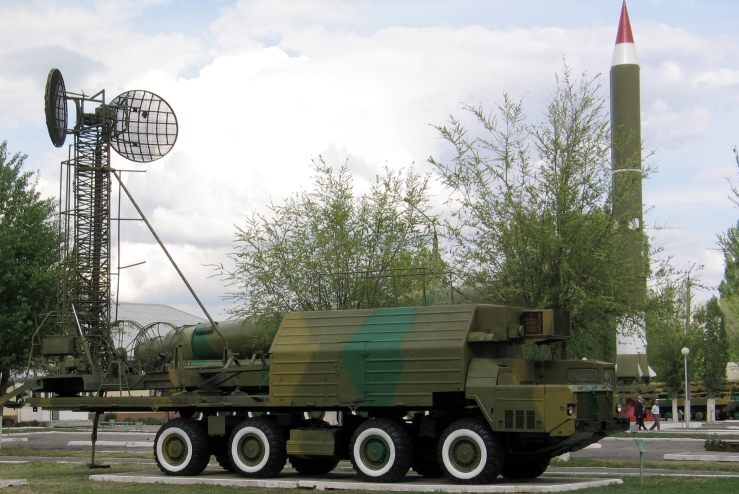In order to start a series of articles about the American signal intelligence satellites, written with guest author Rob1, I thought it could be interesting to give some background on what those satellites listen to. So here is a quick overview of the various types of signal intelligence targets, with an emphasis on the Cold War period.
Historical Context
The discovery of radio waves revolutionized communications. Instead of having to transport messages by horse, train or plane, and instead of having to build long telegraph lines, it became possible to transmit information instantaneously between two points without any infrastructure in-between.
The advantage was obvious, especially for military applications. Remote outposts, ships at sea, and planes, could easily receive their orders and report their status. Conversely, being able to intercept those communications became equally critical. During World War II for instance, the Allied forces put a lot of resources in intercepting and decrypting German and Japanese communications. After the war, the political situation changed, and for the Americans the USSR became the focus of their intelligence effort. The closed nature of the Soviet government and society made it a tough target to crack. US diplomatic presence, and US spies in the Eastern bloc, brought some light on the Soviet activities, but much of it remained inaccessible.
To gather more information, the US turned to signals intelligence (SIGINT) – the collection and analysis of electronic emissions – in order to answer the most pressing political and military questions. Because SIGINT relies on collecting signals from targets, different questions will result in collection against different targets. A few of those targets are listed below, with a bias towards installations targeted by the USA in the Soviet Union.
Communication links
Intercepting communications links to eavesdrop on conversations is called COMmunications INTelligence, or COMINT, in intelligence jargon. Modern-era communications use several different technologies, which require different interception methods. Cable or fiber-optic communications, for instance, require a tap on the cable or the station at the end of the cable to be recorded. This is not achievable with a satellite so is out of the scope of this article.
Radio communications are much easier to intercept: all that is needed is a line of sight to the emitter, and a large enough antenna to collect the signal.
Microwave networks
Radio communication links are sometimes used instead of cable or fiber to transport signals over a large distance, over land. They are competitive because they require less infrastructure: relay towers need to be set up only every tens or hundred of kilometers, whereas deploying a cable means digging a trench and burying it along the same distance, which can be more expensive. The links between the relays are usually highly directional, which is often done using microwave frequencies.
These links can be deployed across a whole country, forming a microwave network. Here is a map of the 1960s AT&T microwave communication network:

During the Cold War, the CIA painstakingly built maps of the Soviet networks (source), using KH-4 imagery:

Troposcatter networks are a variant of microwave networks. Instead of having each tower in line of sight of the next one, the relays are placed further apart, and they communicate by bouncing radio waves on the upper layers of the atmosphere. That way, the number of relay stations can be reduced. The USSR built such networks, called Sever and Gorizont, to communicate with its most remote regions. The network map is below:

Microwave networks are highly directional, they only emit signals towards the receivers. This means that for interception with a reasonably-sized antenna, the eavesdropper either has to be placed in-between two towers (which requires a very discreet listening post), or has to be located somewhere on the line linking the emitter and the receiver. The latter can be done by a satellite in the right orbit, as shown below:

Since the microwave beams are parallel to the ground, the satellite has to see the location of the relay towers at a grazing incidence. A more convoluted and less reliable method is to point a dish at the Moon and listen to the signals that bounced off it.
Microwave network were very popular for strategic communications in the 1960s, and could also be set up between mobile military units, making them very interesting SIGINT targets. Nowadays, links between cell phone towers are often done using microwave, especially in rural areas.
For non-directional emitters, such as cell phones or walkies-talkies, the problem is much simpler: the eavesdropper can be placed anywhere within line of sight, although closer is better.
Satellite communications
Microwave networks are still popular (especially for High-Frequency trading), but nowadays for remote connectivity, satellite communications are preferred. The data either goes though a low Earth orbit constellation such as Iridium or GlobalStar, or more commonly through a Geostationary communication satellite. The communication link is then made out two parts: the uplink, from the sender to the satellite, and the downlink, from the satellite to the ground. Spying on the downlink can be relatively easy: all that is required is building a duplicate receiving station close to the official one. This is what the NSA does at Menwith Hill, and it calls this activity foreign satellite collection or FORNSAT.

However, if the receiver is in a denied location (the middle of Russia for instance), building a large ground station will get noticed. The solution can then be to spy on the uplink, which is a directional radio beam targeted at the satellite. This means the eavesdropper has to be somewhere in that beam, which can be done by placing an eavesdropping satellite close to the original communication satellite.
Machine communications
Communications between people are not the only target of SIGINT. Communications from or between machines can be just as interesting. Listening to them is called FISINT, for Foreign Instrumentation Signals INTelligence. Historically, one of the major aspects of FISINT was to intercept ballistic missile telemetry: during a test flight, a rocket or a ballistic missile transmits in real-time its status (its acceleration, the quantity of remaining fuel, the engine throttle level for instance). These low-level technical parameters are of utmost importance to its designers, to know if the vehicle behaved correctly. They are also very interesting for foreign spies wanting to know the technology behind the missile, its range, and its payload capacity. During the Cold War, the development of Soviet ballistic missiles was one of the primary concerns of the US, so FISINT was used to assemble a picture of the Soviet ballistic program.

The telemetry sent from a missile is usually not directional, so either a ground station within line of sight, or a satellite with a large antenna can intercept it. The advantage of a satellite is that it can establish a line of sight from the moment the missile is sitting on its launchpad. By comparison, a clandestine tracking station located far from the launch site needs to wait for the missile to rise high above the horizon after launch, in order to get a line of sight. So using a satellite gives access to the full telemetry, whereas ground stations give only partial access. Consequently, less intelligence can be derived from the ground-based interception.
Since a ballistic missile can cross 10 000 km in half an hour, an intercepting satellite has to be able to track it around the globe by re-pointing its antenna. For ground stations, several of them are needed to cover the whole trajectory.
Other kinds of communication between machines are of interest, such as the automated communications between radars and missile sites in an air defense network. These communications can use dedicated microwave or troposcatter networks, so they can be intercepted using the same methods as COMINT targets. The US codeword for these activities is PROFORMA.
Electronic Intelligence
The previous cases dealt with the content of communications. In some situations, the existence of a radio signal matters more than its content. This is especially the case for radar signals, which have no information content by themselves. The collection of information about the signals themselves is called ELINT, for ELectronic INTelligence. ELINT can be split into two categories, technical ELINT and operational ELINT.
Technical ELINT
Technical ELINT focuses on the details of the signals. In the case of a radar, the characteristics of interest can be the transmitted power, the frequency, the pulse repetition timing, or the shape of a pulse. The capabilities of a radar can be deduced from these parameters. For instance, the detection range of a radar against a given type of aircraft or missile can be computed, or the best ways to jam the radar can be determined. This can be interesting for an Air Force looking to program the electronic countermeasures aboard its planes, to avoid detection or break weapons-guidance lock. This kind of work can take quite some time, so it is typically done long in advance, and ideally not on the fly during a crisis situation.
The same is true for other signals: the technical characteristics of a microwave network can be determined by recording its signals, for instance in order to better devise a system to intercept the communications afterwards.
During the cold war, the technical characteristics of Soviet radars were of special interest to the USA. The ballistic missile early warning radars, and the radars associated to an anti-ballistic missile system (ABM), were especially critical. Indeed, the warning time Moscow would get in case of a US missile attack, and possibly the effectiveness of this attack, depended on them. Consequently, estimating the range of these radars was a priority.

Operational ELINT
Operational ELINT aims at delivering intelligence useful for military operations. The timeliness of this intelligence is critical. For instance, operational ELINT would focus on detecting what radars are in a region, and where they are, instead of looking in detail into their signals.
Such information can be used to avoid detection when planning flight paths for strike aircraft. In the context of the Cold War, this is exactly what the US Strategic Air Command (SAC) did. It used information about the number and location of Soviet radars to plan nuclear strikes for its bombers. The US Navy was also interested in locating enemy ships using their radar emissions.

The accuracy of the detection and localization plays a big role in operational ELINT. A detection alone without localization can help realize a specific enemy system is present in a theater of operations. Some actions can then be taken to mitigate its impact, but it offers only limited ways to treat the problem.
A detection with a rough location can be useful to plan paths around the emitter, to avoid detection, or to minimize the area in which to search for the emitter.
A precise enough localization enables direct targeting. The required precision depends on the weapon. A nuclear missile does not need too much accuracy against soft targets, whereas targeting a small bomb to minimize collateral damages will require almost metric geolocation accuracy of the target.
It is easier to get a good accuracy when the intercepting system is close to the target. That means planes have an advantage over low-flying satellites, which themselves have an advantage over high-orbit satellites.
Radars are not the only signals of interest of operational ELINT. The localization of microwave, troposcatter or satellite links associated with mobile military units is also very interesting: they enable detection and localization even when they do not have radars, or if their radars are switched off.

Sources
American Cryptology During the Cold War, 1945-1989. Books I, II, III & IV
Electronic Intelligence (ELINT) at NSA
Telemetry Intelligence (TELINT) During the Cold War
The US Intelligence Community. Jeffrey T Richelson.
The Wizards of Langley: inside the CIA’s Directorate of Science and Technology. Jeffrey T Richelson.




[…] Source:https://satelliteobservation.wordpress.com/2017/06/04/signal-intelligence-101-sigint-targets/ […]
LikeLike
Great foundational start! Really enjoyed reading this with maps, photos, and diagrams! Good work!
LikeLike
A quand une traduction en français ?c- a moins qu’elle n’existe déjà …-
LikeLike
[…] Read Full Story […]
LikeLike
[…] Signal intelligence 101: SIGINT targets from Tumblr https://chrisshort.tumblr.com/post/161743018072 via IFTTT […]
LikeLike
[…] Signal intelligence 101: SIGINT targets […]
LikeLike
[…] Full article here: https://satelliteobservation.wordpress.com/2017/06/04/signal-intelligence-101-sigint-targets/ […]
LikeLike
[…] our previous article Signal intelligence 101: SIGINT targets, which described what kind of intelligence the USA could collect by targeting a variety of Soviet […]
LikeLike
[…] looking at what signal intelligence (SIGINT) satellites listen to, and having a look at the (partial) history of those satellites in the US, it’s now time for […]
LikeLike
[…] Earth Orbit Signal Intelligence satellites are also included, as well as optical systems using film and launched after 2000 (to […]
LikeLike
[…] next-generation CSO optical observation satellites will replace the aging HELIOS II, an operational signal intelligence triplet called CERES will replace the demonstrator triplet, and SYRACUSE IV, the new pair of […]
LikeLike
[…] he mentioned signal intelligence capabilities will be improved with the first operational satellite system, CERES, being planned for […]
LikeLike
[…] payloads. For instance, the USA uses the Global Hawk high-altitude drone for imagery collection, signal intelligence and maritime surveillance. This requires operating at least 3 drones to keep only one on-station, […]
LikeLike
[…] This, along with the pictures released by the Chinese government, hinted at a constellation of signal intelligence […]
LikeLike
[…] this paper validates that using log-periodic antennas on a satellite is a tell-tale sign of a signal intelligence application, and that the frequency ranges estimates by measuring the antennas in the pictures are […]
LikeLike
[…] first of which has already been launched, are replacing the ageing Helios II satellites. The CERES signal intelligence triplet will take over from the ELISA demonstrator, which will represent a revolution in French […]
LikeLike
[…] was scheduled to be launched from French Guyana on a Soyuz rocket, which is no longer an option. In Signal Intelligence, after several prototype satellites, a first operational capability has been reached with the CERES […]
LikeLike
[…] first of which has already been launched, are replacing the ageing Helios II satellites. The CERES signal intelligence triplet will take over from the ELISA demonstrator, which will represent a revolution in French […]
LikeLike
[…] A quick overview of the various types of signal intelligence targets, with an emphasis on the Soviet Cold War systems — Read on satelliteobservation.net/2017/06/04/signal-intelligence-101-sigint-targets/ […]
LikeLike